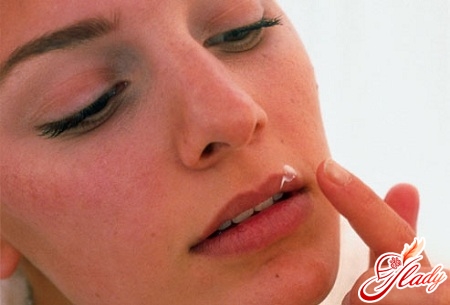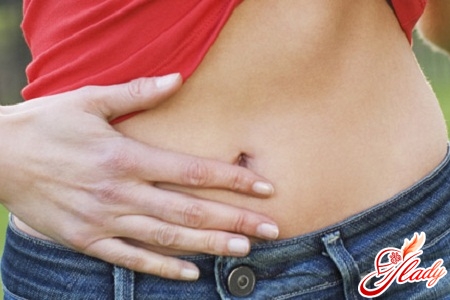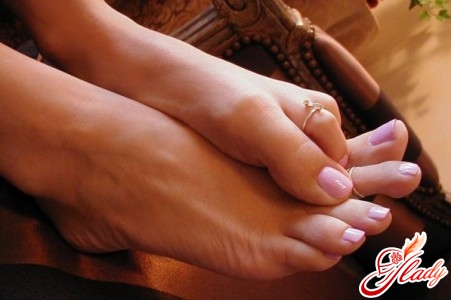
Almost every girl and woman knows,what is vaginal microflora disorder, or vaginal dysbacteriosis (dysbiosis). This is a very insidious disease, since it is asymptomatic, does not make itself known in any way, but over time it can lead to serious complications. Therefore, it is important to know what are the causes and signs of this disease and how to restore the vaginal microflora.
Causes of vaginal dysbiosis
There are many reasons that lead to a violation of the vaginal microflora. The most common of them are:
- hypothermia, which reduces local and general immunity, which often affects the microflora of the vagina;
- hormonal disorders, which lead to irregular sexual life or malfunctions of the menstrual cycle, as well as puberty, pregnancy, postdoctoral period, abortion, menopause, etc .;
- the change of climate is often the cause of exacerbation of dysbiosis;
- sexually transmitted infections;
- infections of the pelvic organs that lead to inflammatory processes;
- antibiotic therapy;
- lack of personal hygiene;
- bowel disease, especially dysbiosis;
- violation of the rules for the use of tampons during menstruation: untimely replacement of them creates all conditions for the development of dysbiosis and inflammation of the vagina.
These factors do not always necessarily lead todisruption of the vaginal microflora. If a woman's immune system is in order, in most cases it independently maintains healthy microflora, and in case of minor deviations it helps it return to normal. However, if a woman constantly encounters any of the factors listed (for example, constantly gets too cold or does not cure a diseased intestine), then the likelihood of microflora disruptions increases.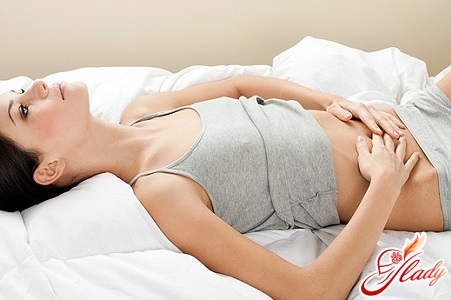
Symptoms of vaginal dysbiosis
As already mentioned, usually dysbacteriosisis asymptomatic. Periodically, changes in vaginal discharge may be observed, but for quite a long time, the woman does not notice any deviations. If any of the following symptoms are observed, this is a reason to visit a gynecologist, since they may indicate a problem:
- increase in the number of vaginal discharge, especially white-yellow color;
- secretions have an unpleasant odor;
- dryness or other uncomfortable sensations in the field of external genitalia (including during intercourse).
This disease is not treated by any otherdoes not give itself away by any signs. If you observe any other symptoms, this indicates that dysbiosis has led to complications - inflammation or infection. Signs of inflammation are:
- sensation of burning, pain, itching in the external genitalia and in the vagina;
- feeling of dryness in the vagina during intercourse.
In addition, vaginal dysbacteriosis can lead to other, much more serious complications:
- infection of the uterus, which can provoke the development of endometritis;
- infection of the appendages, leading to adnexitis;
- damage to the urethra and bladder, it can lead to urethritis and cyst.
Therefore, at the first signs indicating a deviation from the norm, visit a doctor.
Treatment of violations of the microflora of the vagina: elimination of the cause
Classical medicine offers a program for restoring vaginal microflora, consisting of three steps:
- elimination of bacteria that caused microflora disorders;
- directly restore vaginal microflora;
- restoration of immunity of the vaginal wall, in order to maintain a healthy microflora in the future.
Next, we will look at each step in more detail.In order to cure the disease, first of all, it is necessary to eliminate the cause that led to its development. As we have already found out, the reasons may be different. First, the doctor will prescribe tests. It is important that both partners take the tests prescribed by the gynecologist. This will additionally help to identify the cause of dysbiosis. In addition, if the cause was a sexually transmitted infection, this will help prevent re-infection of the partner. If the cause was indeed a sexually transmitted infection, it is necessary to eliminate the causative agent of the disease. In this case, you cannot do without a course of antibacterial therapy, that is, taking antibiotics. The following drugs are usually prescribed: Sumamed, Trichopolum, Amoxiclav, Doxycycline, etc. If sexually transmitted infections were not detected, then it is not necessary to take antibiotics. You can not use antibacterial therapy, or take a very short course - no more than 5 days. Then it is imperative to carry out local procedures, the effectiveness of which is difficult to overestimate. For this purpose, classic medical tampons and baths are used. These procedures are carried out in a complex manner. They suppress pathogenic microflora, restore healthy microflora and correct local immunity. Antiseptics are used. The best antiseptic in this case is "Miramistin". When the cause of the microflora disorder is detected and eliminated, it is time to restore normal microflora.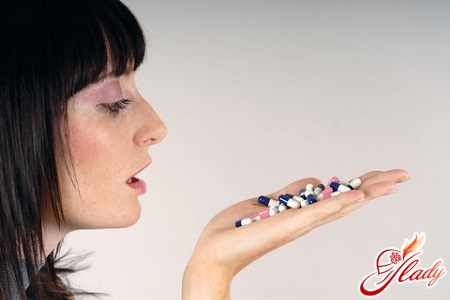
Restoration of vaginal microflora
This step always involves correction.local immunity. It is important to do this because the violation of the vaginal microflora is associated with a decrease in the immunity of its wall. Namely, the vaginal wall, or rather its immunity, controls the state of the vaginal microflora. It turns out to be a vicious circle: until the immunity of the vaginal wall is normalized, the microflora will not be able to return to normal either. If the disease is not advanced, then local immunomodulators are prescribed. If the disease has passed into an advanced stage, treatment requires a more complex and comprehensive approach. Often, the course begins with immunomodulatory treatment and then antibiotic therapy is added. Often, the cause of microflora disorders is thrush. It is quite difficult to restore the vaginal microflora in this case, because thrush most often occurs as a result of antibiotic treatment. Therefore, the course of treatment consists of antibiotic treatment, then treatment for them (from the consequences), and only then a restorative course is carried out. Usually, treatment takes 3-4 weeks. After the course, you need to undergo a follow-up examination and do tests to ensure the effectiveness of the treatment. If the tests are good, then the treatment is stopped. Now the main task is to maintain healthy microflora and take preventive measures so that the disease does not return again.
Preparations for the restoration of the microflora of the vagina
There are many medications available to solve this problem.problems. But you should remember that they should be prescribed exclusively by a doctor. Never self-medicate and do not prescribe drugs, suppositories, etc. to yourself. The fact is that you can easily make a mistake with the choice, since not all drugs for restoring microflora work equally effectively in different cases. Special vaginal probiotics containing lactobacilli are very good for restoration. And here it is important not to make a mistake with the choice. Any infection destroys the upper layer of the epithelium, it peels off. Thus, beneficial microorganisms cannot gain a foothold in the vagina and die after 5-7 days. If you use regular probiotics, this will not solve the problem. Therefore, you need to use a dual-action drug: on the one hand, it will populate healthy microorganisms in the vagina, and on the other, it will promote the restoration and growth of the epithelium. Thus, microorganisms will gain a foothold on it - and the microflora will be restored. Such drugs include vaginal tablets "Laktogin" ("Vagilak"), "Ginoflor", "Ecofemin". After the course, you need to wait a week or a little more. If during this time the symptoms of the disease are not detected, the gynecologist can prescribe a course of "VaginormS". These are also vaginal tablets that restore the normal pH balance of the vagina, thereby promoting the development of healthy microflora. The course lasts 1 week. In addition, vaginal suppositories are prescribed to restore the vaginal microflora. For example, "Bifidumbacterin" suppositories have proven themselves to be excellent. The course of treatment with these suppositories lasts 10 days, it is necessary to put 1 suppository every morning. A similar course is prescribed with "Laktobacterin" suppositories, only they need to be put at night. Another good suppository for restoring microflora is "Kipferon". Treatment with these suppositories consists of 2-3 courses, 10 times with a break of 1 week. The doctor may also prescribe the drug "Normoflorins" B and L. These are drugs for the treatment of dysbacteriosis, taken orally in the morning and evening for 1 month. In addition, do not neglect the diet: during treatment, it is necessary to include fermented milk products in the diet, which will also help restore the flora and enhance the effect of drugs and suppositories. Whatever treatment the doctor prescribes, it is very important to periodically take tests (bacteriological cultures) to monitor changes in the microflora.
Treatment of vaginal dysbiosis: folk remedies
You can try to restore the flora with the help offolk remedies. However, if you decide to try them, be sure to consult your gynecologist: the doctor should know what measures you are taking to be cured. Only after the doctor's consent can you safely begin the procedures. What does folk medicine offer women in such cases?
The courses can be repeated, but a break must be taken between each course. The procedures are not performed during menstruation.
Prevention of violations of the vaginal microflora
Finally, when the treatment came to an end,the final stage comes - disease prevention. In fact, this is a rather complicated stage, since it is often impossible to determine the cause of vaginal dysbacteriosis. In this case, the doctor can give general recommendations:
- strengthening of immunity. Usually, doctors prescribe "Immunal", "Cycloferon", "Polyoxidonium", etc .;
- observance of personal hygiene;
- regular visits to the gynecologist once every 3 months.This will help not to miss a possible relapse. If there are no relapses within a year after the course of treatment, then visits to the gynecologist can be made less frequent - once every six months.
It is also important to remember what leads todisease, and try to avoid these factors: do not overcool, lead a healthy lifestyle, maintain personal hygiene (especially during menstruation), treat other diseases in a timely manner, eat right, take vitamins so that the immune system is at a high level.





